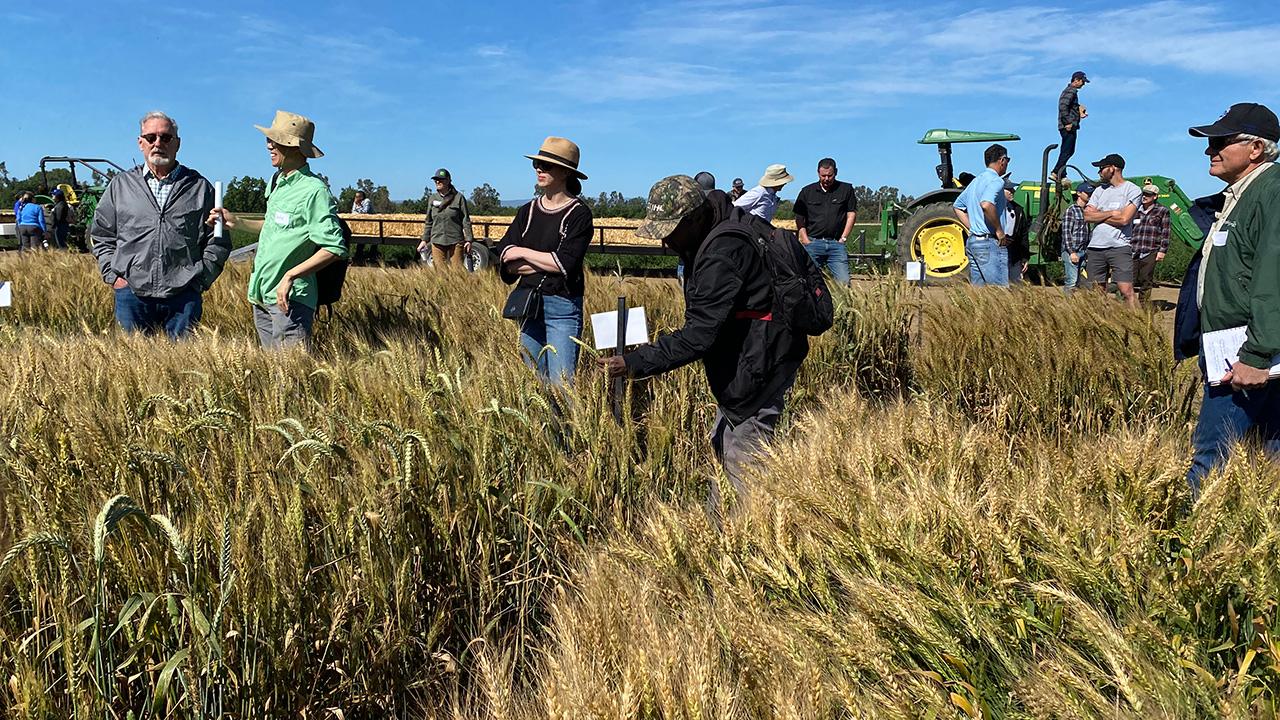
Green waste byproducts work as fertilizer, could save farmers money
Roel Rezk shares research during Small Grains Field Day
Quick Summary
- Liquid byproduct of anaerobic digestion works effectively as fertilizer for small grains harvested for forage.
Anaerobic digesters are commercial facilities that break down food and yard waste to create energy by capturing methane, a potent greenhouse gas. The industry has been growing for decades, boosted in 2022 by a new requirement in California that all jurisdictions collect this waste and recycle it. It’s a key part of the state’s drive to reduce the dangerous, climate-warming gases that green waste creates when it decomposes in landfills.

But even this process creates waste of its own. Scientists at the UC Davis Department of Plant Sciences are trying to figure out what to do with it.
The byproducts of anaerobic digestion contain nitrogen, which plants need to grow. “Can that material fulfill a part of our nitrogen fertilizer requirement?” asked Valentina Roel Rezk, who is looking for answers. She discussed her exploration of that question during the UC Davis Small Grains/Alfalfa Field Day, held May 9.
Roel Rezk used two byproducts of anaerobic digestion – liquids and solids – as fertilizer on test plots of wheat and triticale. Yields were measured when plants were harvested at soft dough stage (for use as forage), and when harvested for grain. She found the byproducts have different effects: The liquid byproduct showed promise to offset chemical fertilizers when used on plants to be harvested for forage.
Roel Rezk also used a drone-mounted camera to track how much nitrogen the plants absorbed.
“We were able to see how much was in the plants in real time,” she said. “This could help growers save money, if they knew exactly how much nitrogen their crops need. Applying just the right amount of fertilizer would also reduce environmental contamination.”
Roel Rezk is a doctoral student in the lab of Cameron Pittelkow, an associate professor in the department.
More resources
Some of the hand-outs offered during Small Grains/Alfalfa Field Day are here.
Read more about the small grains research presented during Field Day here.

Media Resources
- Trina Kleist, UC Davis Department of Plant Sciences, tkleist@ucdavis.edu, (530) 754-6148 or (530) 601-6846
